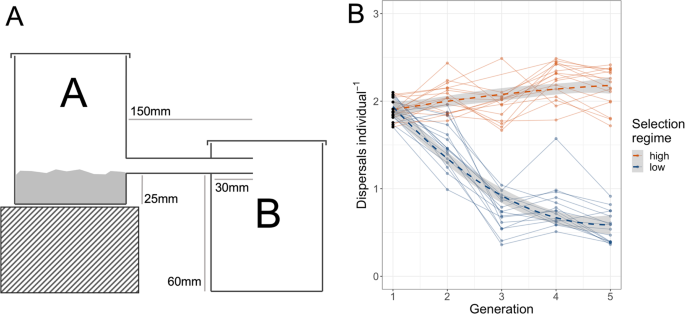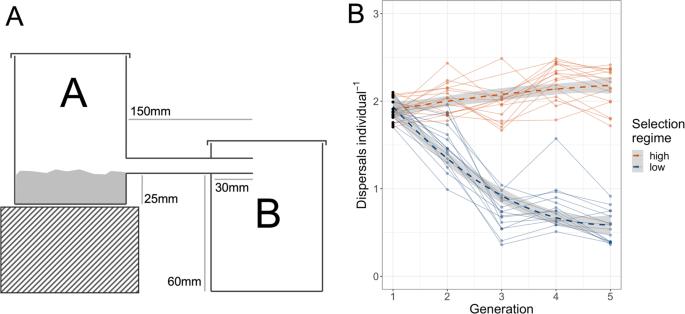Genetic architecture of dispersal behaviour in the post-harvest pest and model organism Tribolium castaneum
IF 4.3
3区 材料科学
Q1 ENGINEERING, ELECTRICAL & ELECTRONIC
引用次数: 0
Abstract
Dispersal behaviour is an important aspect of the life-history of animals. However, the genetic architecture of dispersal-related traits is often obscure or unknown, even in well studied species. Tribolium castaneum is a globally significant post-harvest pest and established model organism, yet studies of its dispersal have shown ambiguous results and the genetic basis of this behaviour remains unresolved. We combine experimental evolution and agent-based modelling to investigate the number of loci underlying dispersal in T. castaneum, and whether the trait is sex-linked. Our findings demonstrate rapid evolution of dispersal behaviour under selection. We find no evidence of sex-biases in the dispersal behaviour of the offspring of crosses, supporting an autosomal genetic basis of the trait. Moreover, simulated data approximates experimental data under simulated scenarios where the dispersal trait is controlled by one or few loci, but not many loci. Levels of dispersal in experimentally inbred lines, compared with simulations, indicate that a single locus model is not well supported. Taken together, these lines of evidence support an oligogenic architecture underlying dispersal in Tribolium castaneum. These results have implications for applied pest management and for our understanding of the evolution of dispersal in the coleoptera, the world’s most species-rich order.


收获后害虫和模式生物赤兔Tribolium castaneum传播行为的遗传结构。
分散行为是动物生活史上的一个重要方面。然而,扩散相关性状的遗传结构往往是模糊或未知的,即使在研究充分的物种中也是如此。谷草是一种全球重要的收获后害虫和已建立的模式生物,但对其传播的研究表明结果不明确,这种行为的遗传基础仍未解决。我们将实验进化和基于代理的建模相结合,研究了赤拟谷牛传播的基因座数量,以及该性状是否与性别相关。我们的发现证明了在选择下扩散行为的快速演变。我们没有发现在杂交后代的传播行为中存在性别偏见的证据,这支持了该性状的常染色体遗传基础。此外,模拟数据近似于模拟场景下的实验数据,在模拟场景中,扩散特征由一个或几个基因座控制,但不由多个基因座控制。与模拟相比,实验自交系的扩散水平表明,单基因座模型没有得到很好的支持。总之,这些证据线支持了一种寡源结构,这种结构是谷草属植物扩散的基础。这些结果对害虫的应用管理以及我们对鞘翅目(世界上物种最多的目)传播进化的理解都有意义。
本文章由计算机程序翻译,如有差异,请以英文原文为准。
求助全文
约1分钟内获得全文
求助全文

 求助内容:
求助内容: 应助结果提醒方式:
应助结果提醒方式:


